Interpreting Tarot Cards: Insights and Symbolism
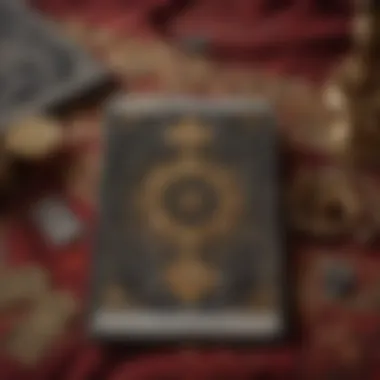
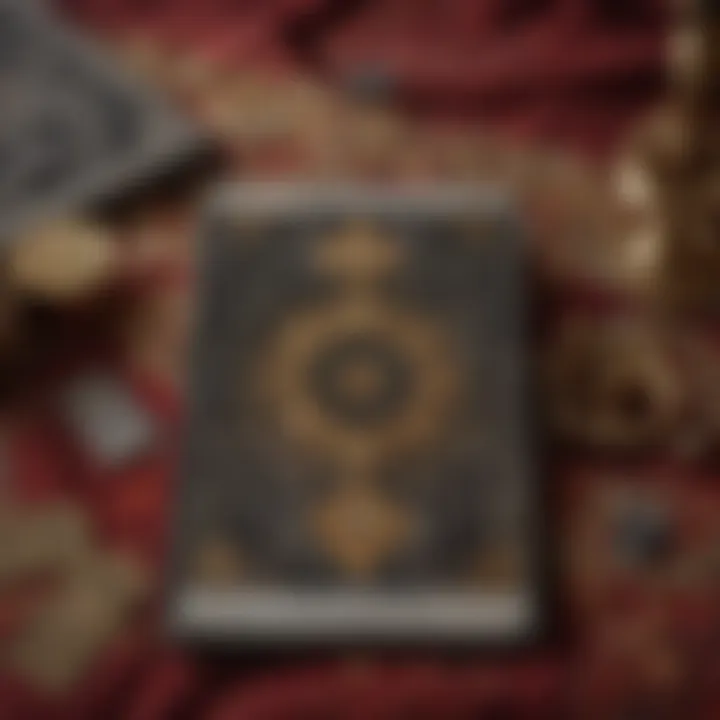
Intro
Tarot reading has long been considered a pathway to introspection and discovery. It's fascinating how each card tells a story, reflecting our subconscious thoughts and feelings. However, to fully grasp the essence of tarot, one must go beyond mere card meanings and familiarizes oneself with the intricate art of interpretation. This journey into tarot invites not only the novice but also seasoned practitioners to peel back the layers of symbolism, repositioning each card's significance in a personal context.
Many believe that the cards are more than just illustrations on a piece of paper; they serve as mirrors of our innermost selves. Each shuffle of the deck, each spread laid out, unfolds a narrative unique to the querent's experiences and emotions. From this standpoint, understanding one's connection to the cards becomes essential. The journey of interpretation is both a craft and a personal exploration.
In this article, we will detail how to navigate the myriad meanings behind tarot cards, illustrating how personal interpretations can lead to a richer reading experience. While some may rely heavily on traditional methods, others may find their own unique methods of interpretation. Both approaches share a common goal: to foster an understanding of oneself through the storytelling of the tarot.
Prolusion to Tarot Cards
Tarot cards have captured the imagination of many individuals over the centuries, often viewed as a pathway to deeper self-awareness and intentions. In this section, we will examine why tarot is more than just a deck of cards. It serves as a high-precision tool for personal exploration and interpretation. With a rich historical background, these cards carry layers of meaning that resonate with those who dare to draw them. This exploration starts with understanding their structure, historical roots, and their role in personal journeying.
Historical Context of Tarot
The origins of tarot are as diverse as they are intriguing. Emerging in the 15th century, tarot was initially a game, played for entertainment in the courts of Italy. But over time, it evolved into a profound esoteric practice. Many believe that the tarot deck is intertwined with ancient wisdom, possibly borrowing elements from the Kabbalah or ancient Egyptian culture. This context sets the stage for understanding the cards not just as tools for divination, but as repositories of human experience and insight.
The Structure of a Tarot Deck
Delving into the structure of a tarot deck enhances comprehension and amplifies the reading experience. A standard tarot deck is comprised of 78 cards, categorized into two main groups: Major Arcana and Minor Arcana. Each card, brimming with its own symbolism, plays a vital role in the overarching narrative of a reading.
Major Arcana
The Major Arcana is distinguished by its powerful imagery and significant meaning. Often considered the heart of the tarot, these 22 cards depict pivotal life lessons and archetypes such as The Fool, The Lovers, and The World. Their primary characteristic is their depth; each card embodies grand themes like destiny, transformation, and spiritual growth. The essence of the Major Arcana goes beyond surface-level interpretations; they challenge the querent to reflect on their life's journey. This makes them a valuable component in our exploration of tarot, as they highlight critical moments that shape personal narratives.
While Major Arcana cards can offer a broad view of one’s life path, they are not without their complexities. They may seem daunting to beginners but, with time, their layers of meaning unfold, presenting both advantages and challenges in interpretation.
Minor Arcana
In contrast to the Major Arcana, the Minor Arcana encompasses the day-to-day aspects of life, consisting of 56 cards divided into four suits: Cups, Pentacles, Swords, and Wands. Each suit deals with different aspects of existence, such as emotions, material concerns, thoughts, and actions.
The strength of the Minor Arcana lies in its versatility; they ground readings in practical and relatable situations. Unlike Major Arcana cards, which often signify more decisive moments, the Minor Arcana allows a more nuanced understanding of current circumstances. Therefore, incorporating these cards helps illustrate the present's vibrancy and challenges.
However, one must also navigate the potential pitfalls of overemphasizing these cards, risking the overlooking of essential life lessons that Major Arcana might present.
Suits and Court Cards
Delving further into the Minor Arcana, we find the intricacies of suits and the court cards. Each of the four suits contains numbered cards (Ace through Ten) and four court cards: Page, Knight, Queen, and King. These court cards represent not only people but also aspects of ourselves — ambitions, struggles, and personality traits. Understanding their position within a reading can offer profound insights.
Incorporating suits and court cards into tarot readings heightens one’s ability to interpret specific situations and people influencing the querent’s life. They enrich narratives by adding layers of character, motivation, and dynamic interaction. However, misinterpretation or neglect of these details can potentially lead to oversights — thus elevating the importance of making connections.
Ultimately, the structure of the tarot deck lays the groundwork for a personal journey, guiding individuals through the labyrinth of their experiences, reevaluations, and many insights that await. This detailed understanding paves the way to stronger, more intuitive tarot readings in the sections to come.
Understanding Card Meanings
The art of Tarot reading is heavily rooted in understanding the meanings behind each card. This section sheds light on why grasping these meanings is crucial for both novices and experienced practitioners. Each card tells its own unique story while also interacting with others in a spread, creating a rich tapestry of insights. A well-rounded comprehension of card meanings can lead to more profound interpretations, allowing one to connect with the energies at play during a reading.
The key benefits one gains from understanding card meanings include:
- Improved Accuracy: Knowing what each card signifies, both upright and reversed, enhances the ability to provide insightful readings.
- Personal Connection: When readers connect to the card’s imagery, symbolism, or personal significance, it fosters a deeper engagement with the deck.
- Intuitive Insights: Familiarity with card meanings can help practitioners trust their gut feelings when drawing connections that go beyond textbook definitions.
In short, digging into card meanings isn’t just about memorizing definitions. It's about cultivating a relationship with the cards, seeing them as companions in your journey rather than mere objects of divination.
Upright vs. Reversed Meaning
Understanding whether a card is upright or reversed is critical in interpreting its message effectively. Each position unveils different aspects of the same card's energy. An upright card typically signifies positive traits or aspects of a situation, while a reversed card often indicates blockages, hidden issues, or warnings.
For example, take the Two of Cups: when upright, it showcases harmony, partnership, and mutual understanding. In contrast, if drawn reversed, it could signal misunderstandings, imbalances, or fractures in a relationship. Thus, being attuned to these nuances can greatly influence the reading's overall direction.
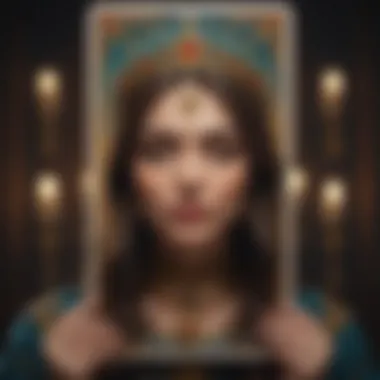
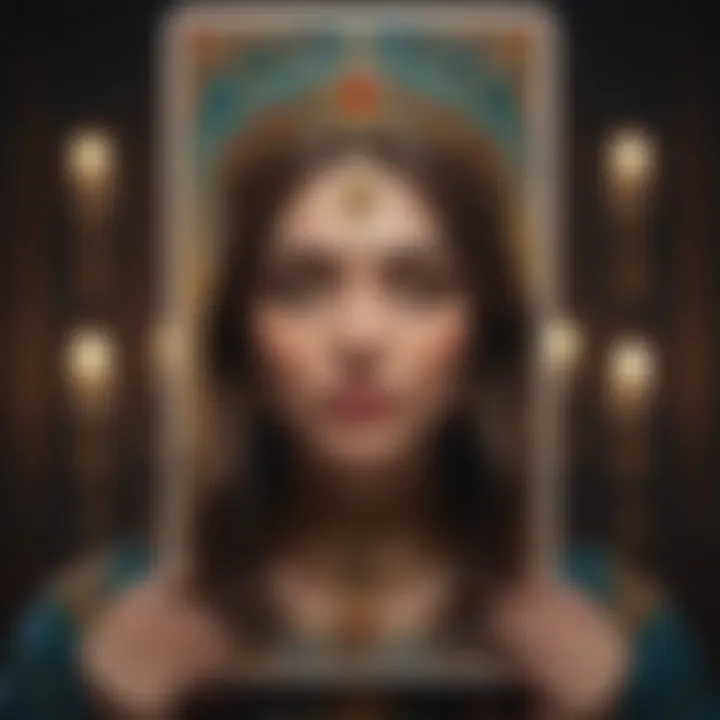
Practitioners should remember:
- Context Matters: A card's meaning can change based on its position in a spread or the cards surrounding it.
- Intuition Plays a Role: Sometimes, an instinctive feeling regarding a reversed card might lead to deeper revelations beyond its standard interpretation.
- Personal Experience Shapes Interpretation: Each reader brings their own lens to the cards, which can modify how they perceive upright and reversed meanings.
Symbolism and Imagery
Every Tarot card is replete with rich symbolism and striking imagery that beckons interpreters to delve deeper. The elements within a card—the colors, figures, and objects—are not random; they serve a purpose, guiding the reader toward understanding the card’s essence.
For instance, in the Death card, the depiction of the skeletal figure doesn’t symbolize an ominous end but rather transformation and change. Similarly, the Sun radiates joy, positivity, and enlightenment, urging the reader to embrace these qualities in their life. Each color and symbol interacts to tell a story that goes far beyond mere words.
To enhance your understanding of symbolism and imagery, consider the following:
- Research Symbolic Meanings: Delve into the background of symbols frequently employed in Tarot. Many have rich histories that can deepen your understanding.
- Personal Association: What does the image evoke for you? Individual interpretations add a layer of depth to the readings.
- Observe Connections: Look for recurring symbols across different decks and how they may relate to your experiences or other cards in a spread.
"The beauty of Tarot lies in its multifaceted nature, where image and symbolism converge to provide a channel for interpretation that resonates with the reader’s unique perspective."
Personal Connections to the Cards
When it comes to tarot, the personal connections individuals forge with the cards can be transformative. It goes beyond mere interpretations; it’s about how the cards resonate with one's own life experiences, intuitions, and emotions. This connection fosters a unique relationship where the tarot cards become mirrors, reflecting not only one’s inner landscape but also guiding future decisions.
Building such a connection involves understanding that the tarot is not just a tool for divination but also a rich reservoir of personal insight. When someone reads the cards, they infuse their thoughts and feelings into the process, creating a layer of meaning that is distinctly theirs. Whether you consider the emotional weight of The Lovers card in relation to a significant relationship, or The Tower during a time of upheaval, these symbols link to lived experiences.
In this journey of interpretation, individuals might confront fears, hopes, or hidden truths that can serve as profound catalysts for change. Here, intuition becomes central; it allows the reader to tap into their gut feelings and thoughts when analyzing card placements or symbols.
Intuition and Interpretation
Intuition is often seen as the heartbeat of tarot reading. For many, it represents that gut instinct that nudges them towards a certain interpretation over another. But how do we nurture this intuitive muscle?
Consider setting a tranquil space where distractions fall away. A quiet setting can invite thoughts and feelings to surface. When engaging with the cards, it’s wise to allow spontaneity and emotional resonance to guide your interpretations. Reflect on what card imagery evokes within you. Maybe a picture of a sunburst resonates joyfully, or perhaps a shadowy figure provokes unease. The play of emotions is a crucial part of decoding the cards.
Moreover, the interpretational process becomes richer when one allows the imagery to synergize with personal narratives. Think about journaling your feelings post-reading; this habit can clarify your emotional landscape and deepen both understanding and connection to the tarot.
Personal Experiences with Tarot
Every tarot reader has a tapestry of experiences that informs their practice. From the initial draws that left you breathless to the readings that surprisingly aligned with life events, these personal narratives shape one’s understanding of the cards.
Take, for example, someone who pulls the Death card and instantly recalls a life-altering change— the end of a job or a relationship. It might initially invoke fear, yet upon reflection, it facilitates a discussion around transformation and new beginnings. This movement from fear to understanding encapsulates the power of personal experience in readings.
Equally, community forums or groups provide fertile ground for sharing these personal stories. Engaging in dialogues on platforms like Reddit allows practitioners to explore varied interpretations and experiences. This exchange not only broadens one’s perspective but also adds layers to interpreting tarot as a collective journey rather than one taken solo.
In diving deep into both intuition and personal experiences, readers discover the multilayered nature of tarot. As you trek through individual interpretations and connections, remember: the magic lies not just in the cards themselves, but in what they stir within each of us.
Individual Tarot Cards Explained
Exploring the individual tarot cards is like peeling back the layers of an onion; each layer reveals deeper insights and unique interpretations that are critical to enriching your tarot practice. Each card, whether in the realm of Major or Minor Arcana, offers a distinct narrative and embodies varying themes and messages that resonate distinctly depending on the reading context. A deeper understanding of individual cards equips practitioners with a crucial tool: the ability to capture the nuances of each reading and the personal connections that can be forged with the cards.
Delving into the specifics of each card not only helps in mastering tarot readings but also in adapting one's approach based on personal intuition and experiences. Whether you’re scrutinizing The Fool’s willingness to leap into the unknown or pondering the contemplative energy of The High Priestess, each card brings forth insights that can significantly influence interpretation. It’s important to remember that each reading is personal and subjective, informed by one’s intuition, experience, and the context in which the cards are drawn.
The Fool
The Fool card represents a fresh start, boundless potential, and the adventure that lies ahead. Despite its numerical value of zero, it carries immense significance; it symbolizes the beginning of a journey where anything is possible. This card prompts introspection about the potential for innocence, opportunity, and spontaneity, nudging readers to embrace the unknown without internal barriers.
In readings, the presence of The Fool might suggest a time to take a risk, step outside comfort zones, and approach life with a childlike curiosity. However, it can also serve as a warning against recklessness. It’s essential to discern whether you or the querent are standing at the edge of a cliff or simply peering over it.
The Magician
The Magician embodies manifestations and resourcefulness. With all four suits represented on the table, this card signifies the harnessing of one’s skills and talents to mold reality. It’s about making things happen—embracing the ability to transform energy into action. When this card appears in a spread, it often implies that the querent holds the tools required to create their desired outcomes.
In contrast to The Fool, The Magician is more grounded in reality. There’s a direct call to action. The card asks, "What are you trying to create?" Moreover, it nudges you to take responsibility for your power and leverage it mindfully.
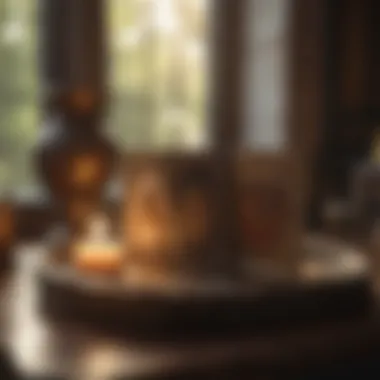
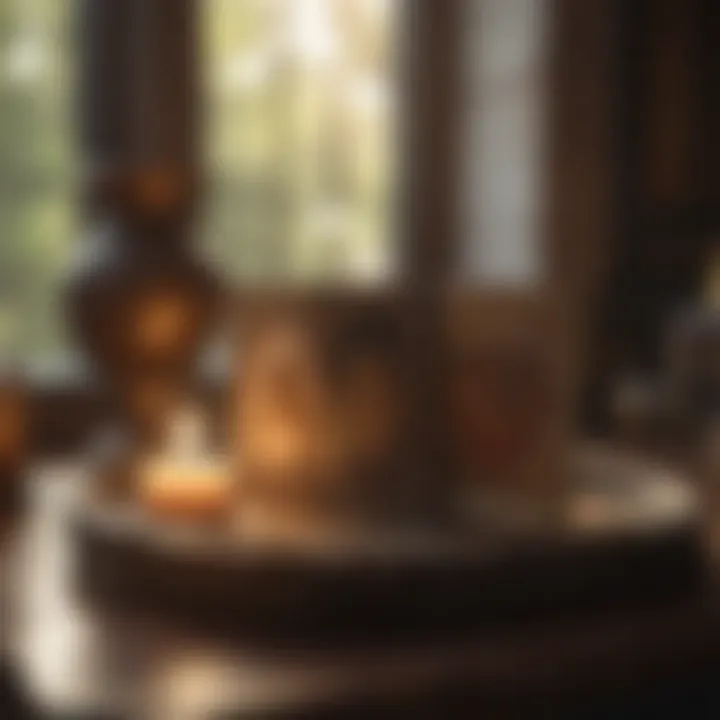
The High Priestess
The High Priestess is the epitome of intuition and mystery, positioned between the known and the unknown. She guards the deep secrets of the subconscious, urging one to trust their instinctive understanding of situations. With her serene presence, the card encourages quiet reflection and contemplation, signifying a time to listen to inner voice.
Her presence in a reading can signal the need for patience and waiting before making decisions. There’s an invitation here to explore dreams, emotions, and every subtle nuance that data cannot reveal. The High Priestess serves as a reminder that often, the answers lie not outside us but deep within.
Understanding the Court Cards
The Court Cards—Page, Knight, Queen, and King—represent people, personality traits, and roles within the tarot narrative. Understanding these cards is pivotal as they often speak directly to those who are part of a querent's life or to how the querent embodies certain qualities.
- Pages symbolize youthful energy and new beginnings, eager to learn and explore.
- Knights bring ambition and action; they represent pursuit and the journey itself, often reflecting a situation in motion.
- Queens carry nurturing energy, wisdom, and intent; they are deeply intuitive and often suggest support or guidance from a feminine source.
- Kings exude authority and power; they exemplify control and a strong presence in decision-making.
When interpreting court cards, consider the dynamics at play. Are these individuals external to the querent, or are they a reflection of the querent's own qualities? The understanding of Court Cards can significantly deepen the reading experience by connecting to the querent's personal relationships or even their internal struggles.
Each individual tarot card serves as a portal to a variety of interpretations. When woven together, they create a rich tapestry of meaning that reflects the querent's personal narrative.
Common Tarot Spreads
Understanding how to arrange your tarot cards is crucial for gaining insights from your readings. Common tarot spreads serve as frameworks that guide both novice and seasoned readers in uncovering layers of meaning during a session. Each spread has its unique structure, which allows for different angles of an inquiry, tapping into the reader's intuition and the complexities of the questions being posed. Choosing the right spread is a foundational step in enhancing the overall effectiveness of the reading.
Spreads can help establish context and clarify objectives, allowing questions to unfold in a structured manner. They enhance the narrative by providing a sequence or layout that helps to weave together various interpretations. An exploratory mindset is essential when reading through these spreads, for they are not rigid formulas but rather guides that open a pathway to understanding.
"A clear spread can turn a chaotic reading into a profound journey of self-discovery."
The Past-Present-Future Spread
This spread is often the go-to for beginners because of its simplicity and effectiveness. It includes three cards, where each card represents, just as the title suggests, the past, the present, and the future.
- Past Card: This card reflects influences and events that have shaped the current situation. It serves as a reminder of lessons learned and obstacles faced. This context can help the reader connect the dots regarding their current phase in life.
- Present Card: The second card sheds light on the present circumstances, revealing current challenges or opportunities. It highlights the energies at play right now and can indicate where one should direct their focus.
- Future Card: The final card looks ahead, offering potential insight into upcoming developments or directions. It's important to remember that this doesn't necessarily predict a fixed future but rather suggests possibilities based on the current trajectory.
This simplicity allows readers to interpret each position individually and collectively. The spread encourages reflection on how past experiences shape current realities and what they may mean in the context of the future.
The Celtic Cross
The Celtic Cross is perhaps one of the most well-known tarot spreads, and for good reason. It provides a comprehensive examination of complex situations, offering a robust framework for deeper exploration. Comprising ten cards, this spread addresses various facets of a question, from immediate challenges to influences from the past.
- Card 1 (Present Situation): At the heart of the spread, this card represents the querent's current state of affairs.
- Card 2 (Challenges): Placed crossing the first card, this card reveals obstacles or conflicts that the individual may face.
- Card 3 (Distant Past): Located to the left, this card speaks to historical elements that inform the current situation.
- Card 4 (Recent Past): Positioned above the first two cards, it highlights recent developments.
- Card 5 (Best Outcome): Often seen as a guiding light, it outlines the potential positive developments provided that the querent makes empowered choices.
- Card 6 (Immediate Future): This card offers insight into what is near at hand.
- Card 7 (Self-Perception): It shines a light on how the querent sees themselves in the current situation.
- Card 8 (Environment): This card assesses external influences that could impact the situation.
- Card 9 (Hopes and Fears): It encapsulates the querent's inner thoughts about the outcome.
- Card 10 (Final Outcome): This card is seen as the culmination of the journey taken through the reading, providing a perspective on what may ultimately unfold.
Navigating through the Celtic Cross can be intricate, but it offers a nuanced exploration of a situation that often leads to significant insights. The complexity of this spread may initially seem daunting, yet it invites a thorough examination of multiple dimensions in a reader's life, allowing for a profound understanding of circumstance and choice.
The Role of Intuition in Tarot
The art of tarot reading goes beyond the mere symbols and images depicted on the cards. It intertwines itself with the intuition of the reader. Intuition plays a significant role in tarot, allowing practitioners to delve deep into meanings that might not be captured through analytical thinking alone. For many, tarot becomes not only a tool for divination but a bridge to understanding the heart and mind, almost like opening a door to the subconscious.
Developing a Personal Style
Finding one's unique approach in tarot is akin to choosing an outfit that reflects your personality. It is vital to blend intuition with established tarot practices but also to allow the individual’s essence to shine through. Developing a style happens over time and through practice. Here are some aspects to consider while honing your own flavor of tarot reading:
- Personal Symbols: Some readers start to notice recurring symbols that have personal significance. Maybe a butterfly represents change for you, while for another, it might denote freedom. Acknowledging these symbols can enrich your readings.
- Deck Affinity: Different tarot decks resonate differently with each individual. Many readers find that one particular deck feels more aligned with their intuition. Spending time with different decks can be enlightening—try shuffling them, drawing a few cards, and feeling how each one speaks to you.
- Intuitive Techniques: Some find meditation helpful before a reading to center their thoughts and connect with their deeper self. Others prefer journaling their feelings or doing simple practices that encourage a flow of intuitive energy—like taking a quiet walk or engaging in a creative activity.
Engaging with these personalized methods can transform a standard tarot reading into something uniquely profound, allowing intuition to guide the flow of the tarot narrative.
Case Studies of Readings
Examining real-life examples of tarot readings can bring to light the significant influence intuition has on the process. Here are a couple of illustrative case studies:
- The Career Transition: In one case, a reader was approached by someone feeling stuck in their current job. During the reading, while interpreting the cards, the reader felt a strong pull toward the imagery of The Chariot. Instead of sticking strictly to traditional interpretations, intuition guided them to advise their querent to pursue a passion they had long neglected. Following the reading, the querent took the plunge into a new career path aligned with their true interests. The relaionship with their work significantly changed for the better.
- Relationship Dynamics: In another scenario, a couple sought guidance about their relationship's future. The reader shuffled the cards and intuitively felt a deep connection with the Two of Cups. Rather than simply explaining the card’s meaning of partnership, the reader tapped into feelings emanating from their own experiences with love and partnership. This led to a discussion about balance and emotional support, which resonated deeply with the couple. They left with a renewed sense of commitment to nurturing their relationship.
These case studies illustrate that while understanding card meanings is vital, being attuned to one’s intuition can lead to personalized insights that go beyond what is written down. It's this interplay of knowledge and instinct that can often yield the richest dividends in tarot reading.
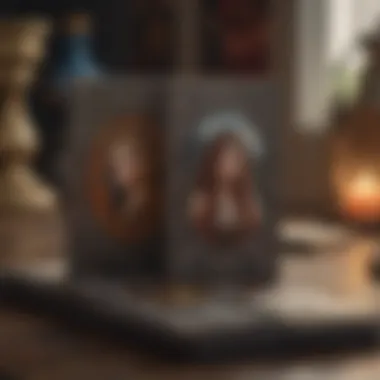
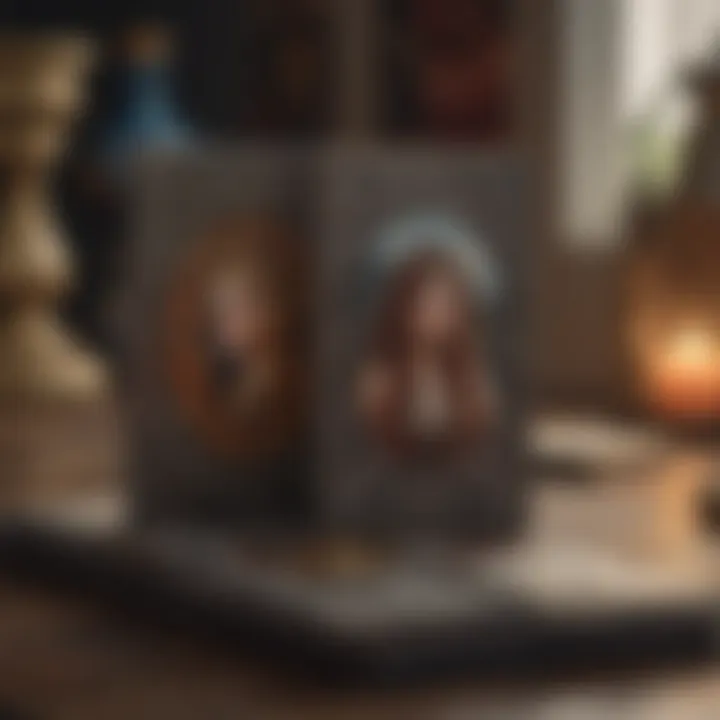
Challenges in Interpretation
Interpreting tarot cards presents a unique set of challenges that can often leave even seasoned practitioners scratching their heads. The importance of this topic cannot be overstated, as understanding these challenges lays the groundwork for deeper insights into the cards and by extension, oneself. Misinterpretations can lead one down the rabbit hole, creating unnecessary confusion in what could otherwise be a transformative reading experience. In this section, we will navigate two prominent challenges: overcoming doubts and the influences of context.
Overcoming Doubts and Misinterpretations
Doubt is a formidable foe in the realm of tarot readings. Whether you are a beginner or boast years of experience, the nagging feeling of uncertainty can seep in, coloring your interpretations. "What if I'm not getting it right?" is a thought that whispers in the minds of many. It’s essential to remember that the tarot is less about definitive answers and more about guiding questions.
When examining card positions and meanings, one must remember:
- Each reading is subjective, heavily influenced by your intuition and personal experiences.
- Cards can hold multiple meanings depending on the context of the query and the querent's situation.
Building confidence relies on practice and exposure to various readings. Keeping a tarot journal can be invaluable. Document your impressions, thoughts, and the subsequent outcomes for future reference. This reflection cultivates a skill set akin to muscle memory, allowing you to trust your intuition more robustly.
"Doubt is a thief that will steal your confidence, so face it with rigor and practice."
Contextual Influences
The context in which a tarot reading happens cannot be underestimated. A card’s meaning can shift drastically based on the querent's emotional state, the nature of the question posed, and even external factors like the reading environment. Just like how the weather can affect our moods, the context of a tarot reading can shape its insights.
Below are a few key considerations when evaluating contextual influences:
- Emotional State of the Querent: If they’re anxious or distressed, even a card like The Sun, symbolizing joy, might be interpreted as elusive or distant happiness.
- Cultural Background: Different cultures have varying associations with symbols and colors, which can drastically influence card meanings.
- Surrounding Atmosphere: An environment filled with negativity or tension can distort interpretations, allowing fear or anxiety to taint even the clearest messages.
Acknowledging these contextual influences fosters a more holistic understanding and interpretation of the cards. It’s about looking beyond the surface, diving deep into the interplay between the cards and the querent’s unique narrative. Practitioners are encouraged to adapt their interpretations fluidly, allowing the environment and emotional states to shine light on the reading itself.
Integrating Tarot Insights into Daily Life
In today’s fast-paced world, finding ways to integrate spiritual practices into everyday routines can seem like a daunting task. However, taking a few moments to reflect upon the meanings of tarot cards can illuminate daily choices and paths, enriching our lives in unexpected ways. Integrating tarot insights into daily life allows practitioners to harness their wisdom not only for foresight but for introspection and mindfulness.
Tarot as a Self-Reflection Tool
One of the most profound aspects of tarot is its capacity for self-reflection. Each time you draw a card, you engage in a dialogue with your inner self. For many, the cards act like mirrors, reflecting our hidden thoughts and feelings, nudging us to look within. Here’s how this can manifest in daily routines:
- Morning Ritual: Starting the day with a card draw can set the tone. Pulling a card for focus, its meanings can guide thoughts and intentions. For instance, drawing the Ace of Cups may ask you to consider where you can cultivate love in your life today.
- Journaling Prompts: After each reading, jotting down thoughts and feelings can solidify insights. Prompts derived from the cards invite deeper exploration. You might write: "How does the Devil card challenge my habits and fears?"
- Evening Reflections: Before bed, revisit the card drawn in the morning. Did your day align with its message? Reflecting this way embeds tarot insights deeply into consciousness, allowing personal growth as an ongoing journey.
"The Tarot can serve as a daily roadmap, ensuring you remain aligned with your inner compass."
Building a Tarot Practice
Establishing a tarot practice is akin to crafting a new habit. Consistency fosters deeper connections and a more meaningful relationship with the cards. Here are some practical elements to consider:
- Choose a Regular Time: Set aside specific times during the week for your tarot sessions. Whether it’s Sunday evenings or whenever you have a quiet moment, keeping this slot sacred builds anticipation.
- Create a Sacred Space: Your environment can dramatically influence your readings. Dedicate a corner of your home for tarot. Decorate with crystals, meaningful images, or items that inspire you. This space becomes a sacred area where insights can flow freely.
- Engage with the Community: Connecting with others who share your passion can enhance your practice. Online forums like reddit.com and social media groups are excellent for exchanging ideas, interpretations, and experiences.
Building a tarot practice not only enhances your readings but gradually deepens your connection with the archetypes and symbols inherent in the tarot. This ongoing relationship can shed light on life’s complexities, making the mundane seem magical.
Epilogue
Wrapping up the exploration of tarot reading offers profound insights into not just the cards themselves, but also the journey of the reader. The importance of understanding tarot comes from its potential to unlock hidden meanings within our lives and experiences. By tapping into the rich symbolism embedded in each card, a practitioner can gain clarity on personal dilemmas and broader life questions.
Summary of Insights
Throughout the article, key aspects of tarot have been meticulously laid out, from the historical contexts that shaped its evolution to the intricacies of individual card meanings. Importantly, we have seen that tarot is much more than a mere tool; it serves as a mirror reflecting one’s inner thoughts and emotions. Here are a few points to encapsulate these insights:
- Historical Significance: Understanding the roots of tarot enriches one’s connection to the practice, allowing for greater appreciation of its depth and evolution over centuries.
- Personal Connections: Each reading is uniquely tailored to the individual, making intuition a guiding force in interpreting the cards.
- Challenges and Growth: Interpreting tarot is not without its hurdles. Recognizing and overcoming doubts leads to enhanced confidence and more meaningful insights.
"Tarot, at its core, connects us to our subconscious, igniting a path to wisdom hidden beneath the surface."
Looking Ahead to Future Readings
As you contemplate your relationship with tarot, consider this: the journey does not end with understanding. It continuously evolves. Looking ahead, there is an invitation to deepen your practice and embrace the unpredictability that comes with each new reading. For those seasoned in the art of tarot, the nuances of upcoming spreads may reveal layers yet uncovered. For novices, this could mean embarking on a path filled with wonder and discovery.
- Setting Intentions: Before each reading, take a moment to reflect on what you wish to explore. This practice can significantly influence the clarity of your interpretations.
- Experimenting with Spreads: Try new spreads or create your own. Tailoring a layout can lend fresh perspective and insight into recurring life themes.
- Community Engagement: Engaging with fellow tarot enthusiasts can broaden your understanding and allow for shared experiences. Online platforms like reddit.com host vibrant discussions on diverse tarot-related topics.
Ultimately, each reading serves as a stepping stone towards greater self-awareness. The interaction between the reader and the cards can unlock not just personal insights, but also foster a community of inquisitive minds seeking wisdom through the age-old art of tarot.







